
Karl J Sherlock
Associate Professor, English
Email: karl.sherlock@gcccd.edu
Phone: 619-644-7871
Just as humans use the speech centers of the brain to form ideas into an arrangement of words, a sentence has a brain with a speech center. A sentence diagram maps the "brain" of a sentence: once you can identify the parts of that brain (that is, its parts of speech), a sentence diagram maps the relationship of those parts.
Another way to think of sentence diagramming is as a map. When we draw a map, we start as all cartographers do: drawing lines--and, a sentence diagram uses a lot of lines. Different lines serve different purposes, just as they do on any blueprint or map. Thankfully, no matter how complex a sentence diagram may be, it depends on a simple set of lines. Commit yourself to committing the following rules of diagramming to memory. Then, complete the Diagramming Exercises, and find out how many crimes of sentence diagramming you can avoid committing.
SOLID HORIZONTALS
Solid horizontal lines in a sentence diagram are exactly what they sound like: they're horizons on which to view the main parts of speech.
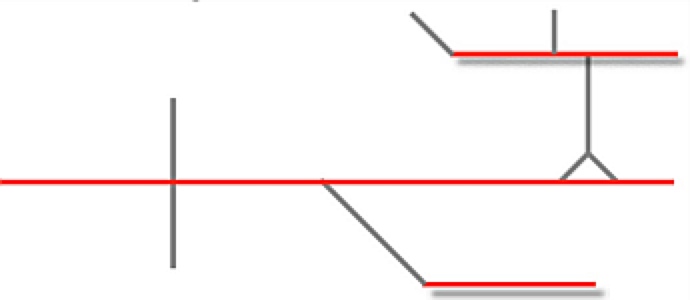
Only main parts of speech go on them:
verbs
nouns, both subjects or objects, including:
DASHED HORIZONTALS
Dashed horizontal lines are used infrequently in sentence diagramming, but when they are, it's usually to connect compound adjectives and adverbs.

Compound modifiers are stock adjective or adverb phrases, sometimes joined by hyphens (e.g., "near or far," ""well and true," "clear and present," "far and wide," "noble and brave,"and so on). In this sense, it's not really so much a horizontal line as it is dashed vertical line placed on its side, then used to connect diagonal elements together as compound modifiers. (See "Dashed Verticals" below.)
SOLID VERTICALS
Solid vertical lines ordinarily serve as dividers to separate main elements on the horizontal lines.

They come in two varieties:
bisecting, to separate subject from predicate verb
intersecting, to separate predicate verb or verbal from direct object
LEFT ANGLE VERTICALS
A "bent" left-angle vertical line sounds a lot like a diagonal line used for modifiers (see below), but it's really just angled. It's used with linking verbs and factitive verbs to separate, not objects, but complements.

The left-angled line leans in the direction of the noun it complements. This is a special exception to the rules of vertical lines, but since complements are kind of a cross between modifiers and object nouns, you can see the logic in using a line that blends the two techniques. Once you begin examining real sentence diagrams using linking verbs and factitive verbs, you'll clearly see the distinctions in the use of these angled lines.
DASHED VERTICALS
Dashed vertical lines (up-and-down) serve the opposite purpose of solid vertical lines:while solid vertical lines are separators, dashed verticals are connectors.
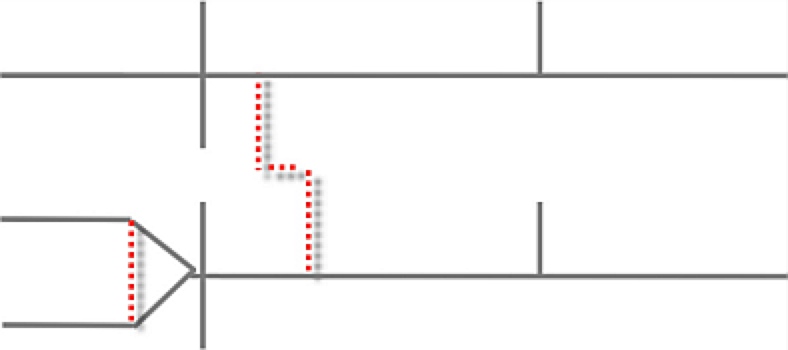
The connectors that are used with them include the following:
coordinating conjunctions
correlative conjunctions
SOLID DIAGONAL LINES
All solid diagonal lines are modifiers within a single clause (even when they're only implied in the sentence).

Some modifying phrases have objects that go on horizontal lines, but all modifiers, when single-word or phrasal, start with diagonal solid lines. These include:
adjectives, and anything that acts like an adjective
adverbs, and anything that acts like an adverb
DASHED DIAGONAL LINES
A dashed diagonal line connects to modifying dependent clauses, including subordinate (adverb) clauses and relative (adjective) clauses. Their function as modifiers perhaps explains why a diagonal line is used. Dashed diagonal lines that connect to adverb clauses are labeled by their subordinating conjunction. Dashed diagonal lines that connect an antecedent to a relative pronoun, however, are not labeled.

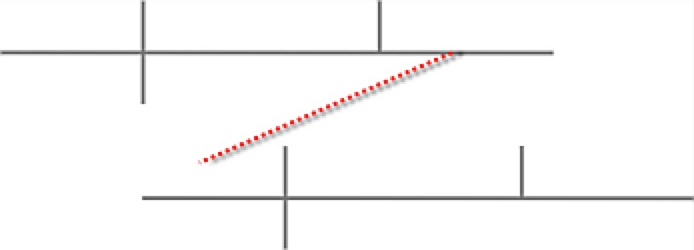
There's no steadfast rule about pointing them left or right, but we use them with the following:
subordinating conjunctions (including comparative subordinators) which are also named on the diagonal
relative pronouns, which always go on horizontal lines; and, the relative adjective “whose.”
Splitters are used with compound elements within a clause or a phrase. When a verb takes two or more objects, for instance, a splitter is needed to stack those objects horizontally, one over the other, in an organized way that allows for modifiers to go under them diagonally.
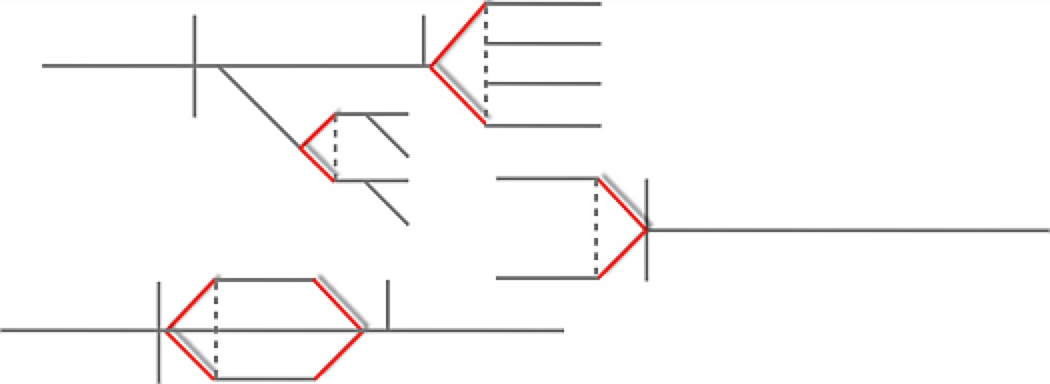
Splitters generally occur with the dashed vertical lines used for conjunctions, since compound elements depend on them. They can be used anywhere parts of speech would go on horizontal lines:
subjects and objects: predicate objects; prepositional objects
predicate verbs
verbals and/or their objects
A verbal phrase or a noun clause is a system within a system: a set of gears moving together inside the clockwork. Because an entire phrase or clause can sometimes fill the same role that, in another sentence, would be filled by a single word, sometimes diagramming gets a little crowded and complex. In real estate, when you don't have room to build outward, you always build upward. A tripod is a way to build the sentence diagram upward, elevating these systems of verbal phrases and noun clauses over their position on the horizontal line so that there's room to expand. Think of them as you would an expansion pack for a video game.
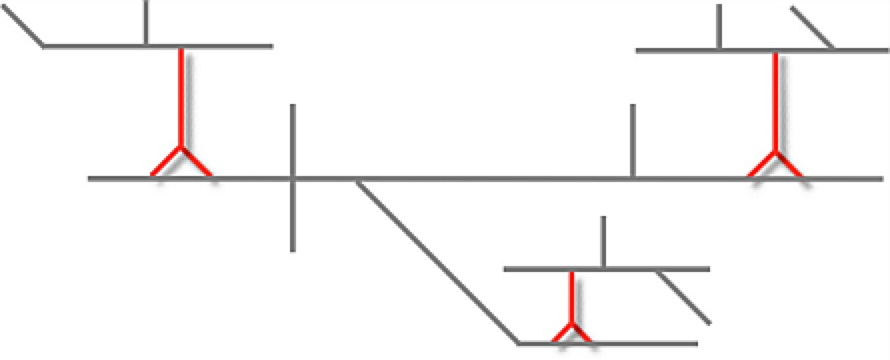
Tripods are used for the following:
noun infinitives and entire infinitive phrases
gerunds and entire gerundial phrases
noun clauses
adjective complements (used with linking verbs and factitive verbs) comprised of
Karl J Sherlock
Associate Professor, English
Email: karl.sherlock@gcccd.edu
Phone: 619-644-7871

8800 Grossmont College Drive
El Cajon, California 92020
619-644-7000
Accessibility
Social Media Accounts